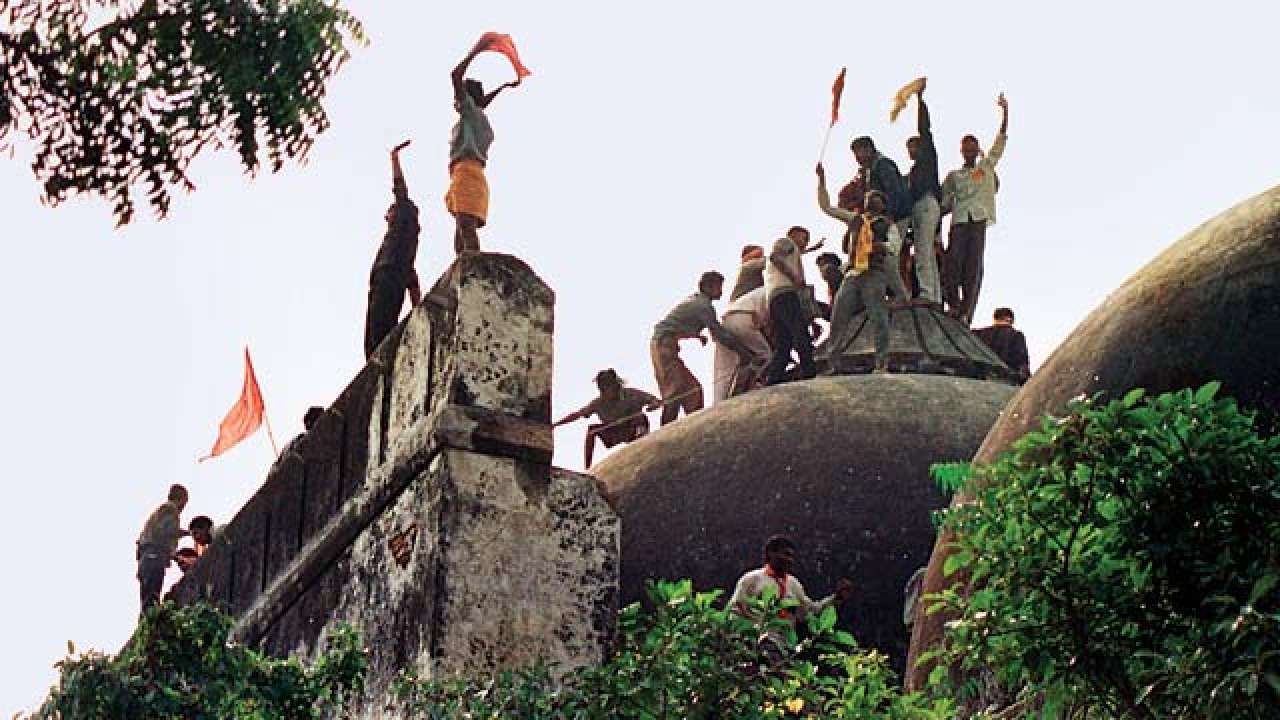
By refusing to refer the matter of revisiting the 1994 Constitution bench judgment to a larger bench, the Supreme Court has set the stage for resumption of hearing on the title suit over the disputed Babri Masjid-Ram Janmabhoomi site in Ayodhya. The apex court has set the final date for the commencement of hearings in the last week of October.
The court in its 2-1 judgment refused to review the Constitution Bench’s observation that a mosque is not integral to Islam. The petitioners had contended that the subsequent judgment by the high court — refering to the 2010 Allahabad High Court’s verdict that divided the disputed Ayodhya land equally among the Nirmohi Akhara, Ramlala Virajman and the Sunni Waqf Board — was influenced by the 1994 Constitution Bench’s judgment to their disadvantage; the fact that two portions of the disputed land went to the contesting parties that represented the sentiments of the Hindu community.
Thursday’s majority judgment, while rejecting the plea for reviewing the 1994 verdict, made it amply clear that the questionable observations made in the Ismail Faruqui case were “neither relevant for deciding the suits nor relevant for deciding these appeals”.
But at the same time, the majority judgment by CJI Dipak Misra and Justice Ashok Bhushan also seem to dispel doubts, if any. The judges said, “The observation need not be read broadly to hold that a mosque can never be an essential part of the practice of the religion of Islam.”
It is at this intersection of religion and legality that the dissenting opinion of Justice S Abdul Nazeer holds significance. Justice Nazeer is not tentative on the issue, rather confronts it squarely. He opines that the “question as to whether a particular religious practice is an essential part of a religion is one which is to be considered by considering the doctrine, tenets and beliefs of the religion”.
Justice Nazeer instead draws strength from the 1954 Shirur Mutt verdict by the Supreme Court. The Supreme Court had held that “what constitutes the essential part of a religion is primarily to be ascertained with reference to the doctrines of that religion itself”. Justice Nazeer opines that even the Ismail Faruqui case should be “brought in line with authoritative pronouncements of the Shirur Mutt case”. If the court held a mosque is not central to Islam, can it deny the fact that congregational prayer is central to Islam? Where do such congregations go to offer prayer if not in a mosque?
The verdict comes at a time when the rumble around the countdown to the general elections next year is beginning to get noisier. Of course, the entire country wants an early solution to the Ayodhya imbroglio, and still, there are some like the BJP for whom this judgment couldn’t have been timed better. The early resumption of hearings shall keep their hopes alive of drawing maximum mileage out of the mandir-masjid issue considering they have hit a rough political patch recently with l’affaire Rafale developing a snag even before take-off.
As it is, there is no dearth of arguments in favour of an out-of-court settlement. Gurus and godmen are being employed on track-II to chisel out the framework. And of course, these are also the very forces that are raring to reject the court verdict if it went against them.
The import of the 1994 judgment, re-inforced by a majority judgment on Thursday, may not have a bearing on the Ayodhya case as underlined by the majority judges. But it has the potential to resonate with issues concerning minority rights in light of Article 25 and 26 of the Constitution. Parliament passes law and the judiciary is entrusted with the right to interpret the law, but there is no denying that it is only in the public domain that all laws operate, function and get tested.
Interestingly, the two judgments throw up references to “secular India”, an idea that is contested, tossed around and distorted. It’s born and re-born in different avatars on the streets of India, which are becoming dominant playgrounds for forces inimical to the very idea of India. Will it, then, not be in the spirit of reason and fair play to clear the air in a polarised climate when minorities are looked down upon with suspicion and when majoritarian worldview has gained circulation?
And who shall hold brief for Muslims torn between the court verdict on the one hand and people like Haryana Chief Minister ML Khattar who doesn’t mince words when he says namaz should be offered only inside mosques and not in public places.
In view of the facts above, would it not have been in the fitness of things to dispel all doubts, and overwhelmingly so, about what place of prominence does a place of worship hold for an adherent of any religion rather than being ambiguous about it? The larger issue also relates to the role of the judiciary, whether it can also double as the clergy in adjudicating on religious practices that are non-discriminatory and in larger social interest.
So what happens to the application of the Shirur Mutt judgment? Even in the Sabarimala judgment delivered on Friday, the Supreme Court allowed temple entry to all women irrespective of age while refusing the contention of the devotees of Lord Ayyappa that they belong to different religious sect. The court emphasised they fall under the broad Hinduism umbrella.
Will we then hold different yardsticks to adjudicate such cases of different religious groups? Will such dichotomy help the debate on Uniform Civil Code get anywhere, if at all? If the answer is a clear no, then perhaps Thursday’s judgment is just a comma, not a full stop to the entire debate that goes beyond the social and political appeal of Ayodhya judgment.
The writer is a senior journalist and author of Newsroom Live